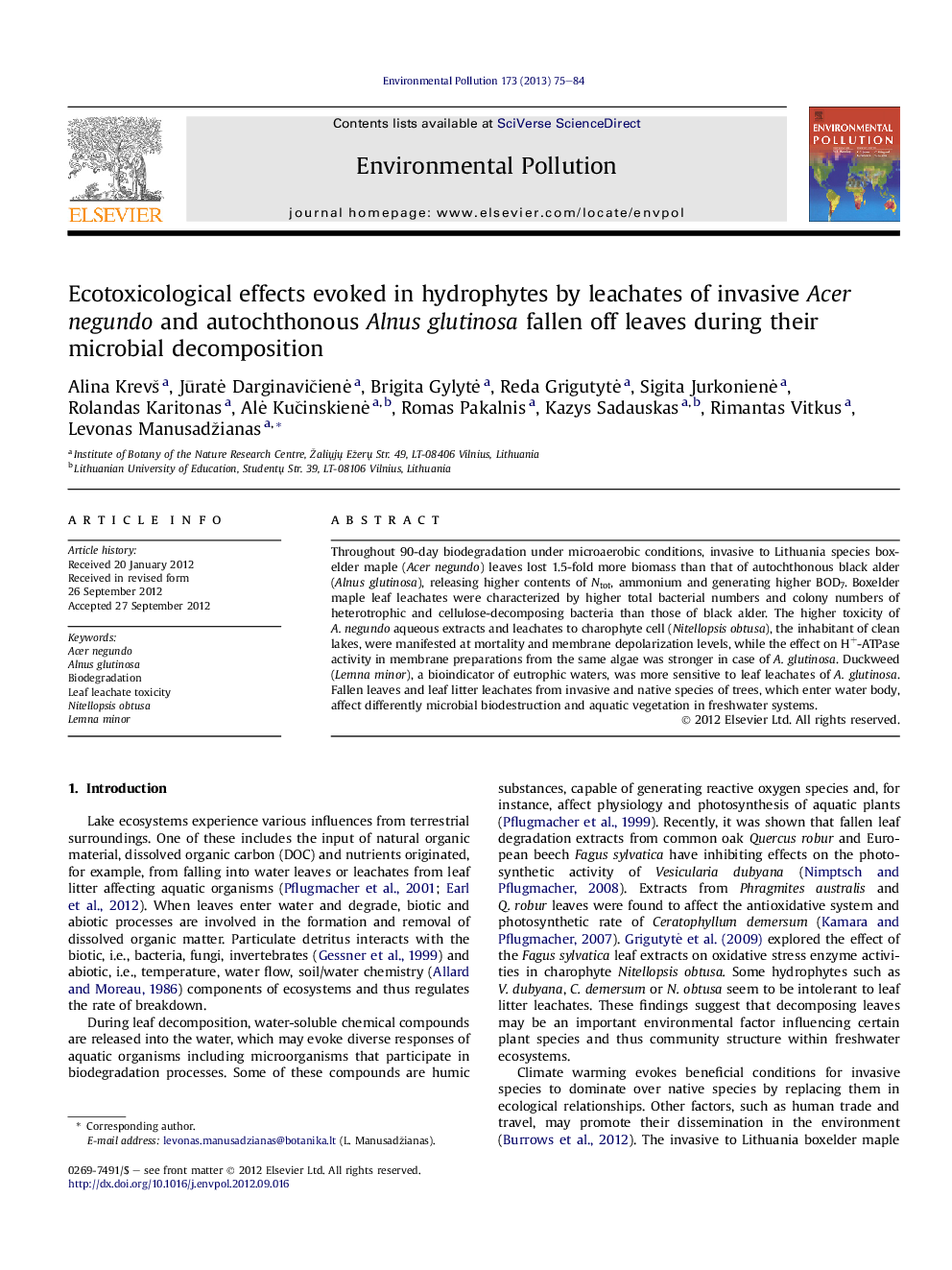| Article ID | Journal | Published Year | Pages | File Type |
|---|---|---|---|---|
| 4424474 | Environmental Pollution | 2013 | 10 Pages |
Throughout 90-day biodegradation under microaerobic conditions, invasive to Lithuania species boxelder maple (Acer negundo) leaves lost 1.5-fold more biomass than that of autochthonous black alder (Alnus glutinosa), releasing higher contents of Ntot, ammonium and generating higher BOD7. Boxelder maple leaf leachates were characterized by higher total bacterial numbers and colony numbers of heterotrophic and cellulose-decomposing bacteria than those of black alder. The higher toxicity of A. negundo aqueous extracts and leachates to charophyte cell (Nitellopsis obtusa), the inhabitant of clean lakes, were manifested at mortality and membrane depolarization levels, while the effect on H+-ATPase activity in membrane preparations from the same algae was stronger in case of A. glutinosa. Duckweed (Lemna minor), a bioindicator of eutrophic waters, was more sensitive to leaf leachates of A. glutinosa. Fallen leaves and leaf litter leachates from invasive and native species of trees, which enter water body, affect differently microbial biodestruction and aquatic vegetation in freshwater systems.
► We examined Acer negundo and Alnus glutinosa leaf extract effects on hydrophytes. ► Nitellopsis obtusa and Lemna minor responded differently to leaf litter leachates. ► 90-day biodegraded A. negundo leaves lost twofold more biomass than that of A. glutinosa. ► A. negundo leachates evoked higher mortality and cell depolarization of N. obtusa. ► Leachates affected H+-ATPase activity in algae membrane preparations.
